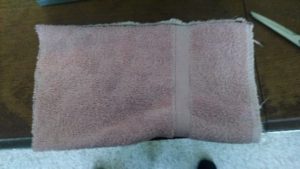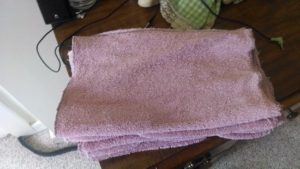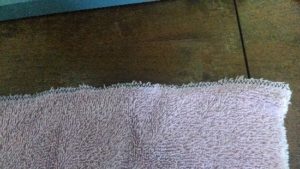 I am decluttering my house via the Konmari method. If you are not familiar with it, the basic gist is that you declutter by category. You take every item in your home in that category, put it all in one place and then sort by one criteria. Hold it in your hand and ask, “Does this bring me joy?” If the answer is yes, you keep it. If the answer is no, you let it go.
I am decluttering my house via the Konmari method. If you are not familiar with it, the basic gist is that you declutter by category. You take every item in your home in that category, put it all in one place and then sort by one criteria. Hold it in your hand and ask, “Does this bring me joy?” If the answer is yes, you keep it. If the answer is no, you let it go.
I just emptied every book I own from my bookshelves and bedroom onto the floor upstairs. I did not touch my husband’s bookshelf downstairs, nor did I touch my children’s shelves.
There are still some books downstairs I need to get to bring upstairs before I begin my book decluttering.
When I did my clothes, it was easy. I like clothes and I like looking good, but I tend to be a bit of a wardrobe minimalist (well, by American standards, anyway) and my emotional attachment to clothes revolves around whether I am presenting myself well when I wear them out of the house, or if I feel attractive or comfortable in them inside the house. Not hugely emotional to me. Or maybe I dealt with anything emotional about them years ago and am cool with my clothes now. Even so, I rid of three lawn bags of clothes when I did my clothing purge.
I did papers before I did books, and that was not too terribly hard. I pruned a two-drawer file cabinet of stuff down to a single drawer. I may actually prune more after I finish this, and get rid of the file cabinet and keep the papers in folders on the bookshelf.
But books.
Books.
Books were how I survived school, and I do not mean as a scholar, but how I could ignore being picked on. Books were how I could learn there was more to the world than the rather Spartan culture I had to confront every time I left the house, and confront how that outside of my family, I was considered more of an inconvenience to be gotten rid of than anyone of any real worth. Books where how I escaped and books were how I grew. My identity as a bookworm was important to me because it could be how I was important or special.
It’s not that I still don’t love to read. I do. On average, I read a book a week, so that’s still part of my life and a part I treasure and enjoy.
In going through all these books – holding each one in my hand and asking, “Does this spark joy?” to decide which ones to keep, I am also confronting not only my past choices, but how I have changed and who I have become now. Even the act of taking all the books down from the shelves was much more emotional than I thought it was going to be.







 After I’ve finished the long edges, I go ahead and sew them into tubes using a zig-zag stitch. I do this for strong seam with a bit of self-finishing on one go. They’re meant or cleaning, so I don’t feel like it’s necessary to spend an extraordinary amount of time on them. Eight in a half hour is plenty enough time to spend.
After I’ve finished the long edges, I go ahead and sew them into tubes using a zig-zag stitch. I do this for strong seam with a bit of self-finishing on one go. They’re meant or cleaning, so I don’t feel like it’s necessary to spend an extraordinary amount of time on them. Eight in a half hour is plenty enough time to spend.
 As I said, this is not housecleaning app for when you want a Master Plan. =Oh yes, I have and like them, but sometimes you’re too damn tired to think much, and want a little motivation to do a little something.
As I said, this is not housecleaning app for when you want a Master Plan. =Oh yes, I have and like them, but sometimes you’re too damn tired to think much, and want a little motivation to do a little something. If you do five of these challenges, you can get a star!
If you do five of these challenges, you can get a star! But suppose you want to make a plan. There might be specific things you want to do on a given day. The UFYH app does take we planners into account, too, with My To-Unfuck List.
But suppose you want to make a plan. There might be specific things you want to do on a given day. The UFYH app does take we planners into account, too, with My To-Unfuck List. One of the drawbacks to the house I live in is that we have almost no yard, and none of it is really flat. What? None? What about this area?
One of the drawbacks to the house I live in is that we have almost no yard, and none of it is really flat. What? None? What about this area? Since I’m sitting for a while writing and coding, I’m not generating a great deal of body heat.2 To combat that, I have a couple of rice bag warmers that I’ve heated in the microwave – one at my back and one at my feet. When one’s feet are toasty, one feels warmer all over.
Since I’m sitting for a while writing and coding, I’m not generating a great deal of body heat.2 To combat that, I have a couple of rice bag warmers that I’ve heated in the microwave – one at my back and one at my feet. When one’s feet are toasty, one feels warmer all over.



